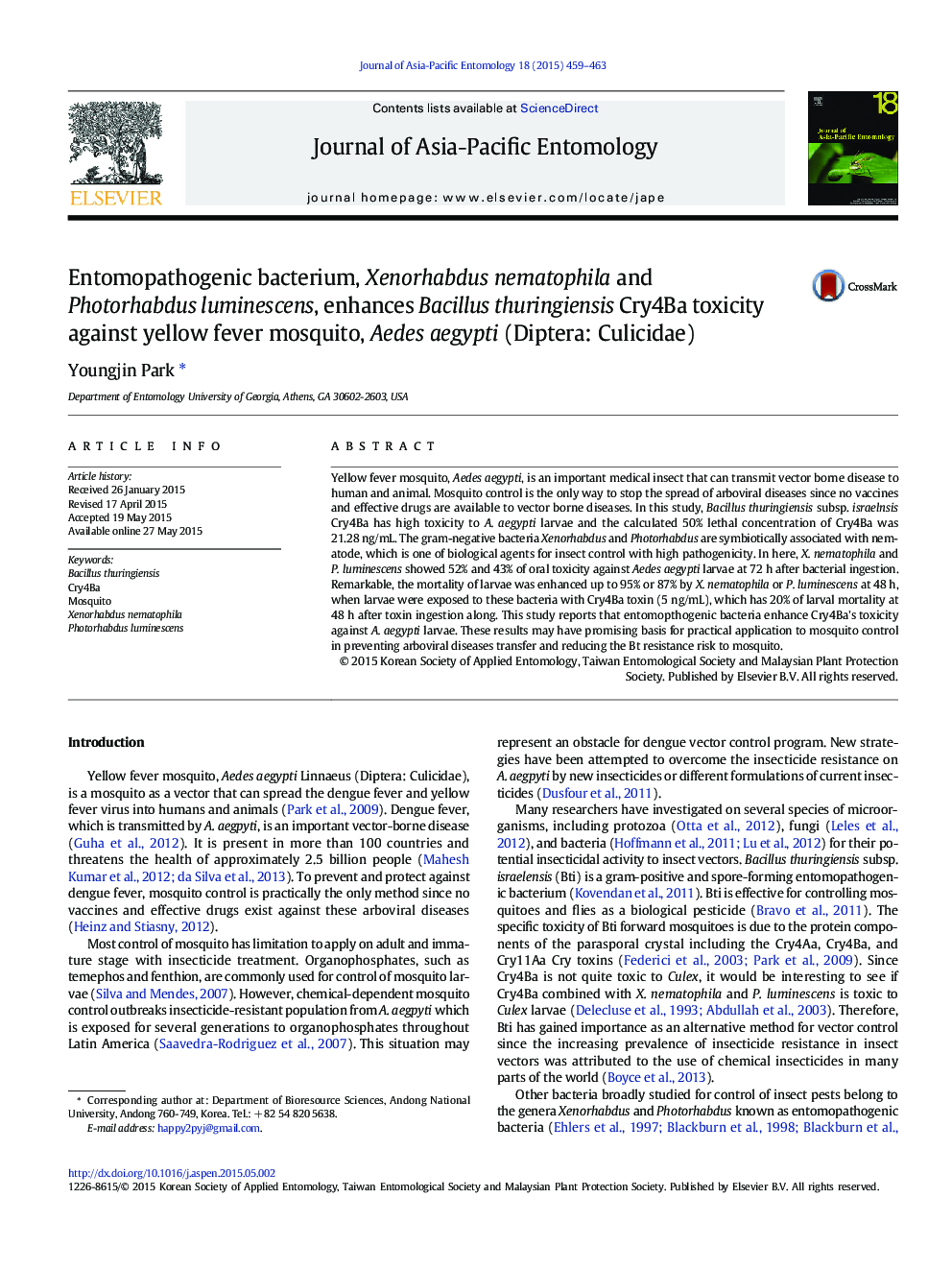| Article ID | Journal | Published Year | Pages | File Type |
|---|---|---|---|---|
| 4524671 | Journal of Asia-Pacific Entomology | 2015 | 5 Pages |
•I test enhancement of Cry4Ba toxicity to mosquito larvae by entomopathogenic bacteria.•Two entomopathogenic bacteria, X. nematophila and P. luminescens, have an oral toxicity to A.aegypti larvae.•Laval mortality was enhanced up to 95% by these bacteria with Cry4Ba toxin as low concentration.•This study shows that entomopathogenic bacteria enhance Cry4Ba's toxicity to mosquito larvae.
Yellow fever mosquito, Aedes aegypti, is an important medical insect that can transmit vector borne disease to human and animal. Mosquito control is the only way to stop the spread of arboviral diseases since no vaccines and effective drugs are available to vector borne diseases. In this study, Bacillus thuringiensis subsp. israelnsis Cry4Ba has high toxicity to A. aegypti larvae and the calculated 50% lethal concentration of Cry4Ba was 21.28 ng/mL. The gram-negative bacteria Xenorhabdus and Photorhabdus are symbiotically associated with nematode, which is one of biological agents for insect control with high pathogenicity. In here, X. nematophila and P. luminescens showed 52% and 43% of oral toxicity against Aedes aegypti larvae at 72 h after bacterial ingestion. Remarkable, the mortality of larvae was enhanced up to 95% or 87% by X. nematophila or P. luminescens at 48 h, when larvae were exposed to these bacteria with Cry4Ba toxin (5 ng/mL), which has 20% of larval mortality at 48 h after toxin ingestion along. This study reports that entomopthogenic bacteria enhance Cry4Ba's toxicity against A. aegypti larvae. These results may have promising basis for practical application to mosquito control in preventing arboviral diseases transfer and reducing the Bt resistance risk to mosquito.
Graphical abstractFigure optionsDownload full-size imageDownload as PowerPoint slide
